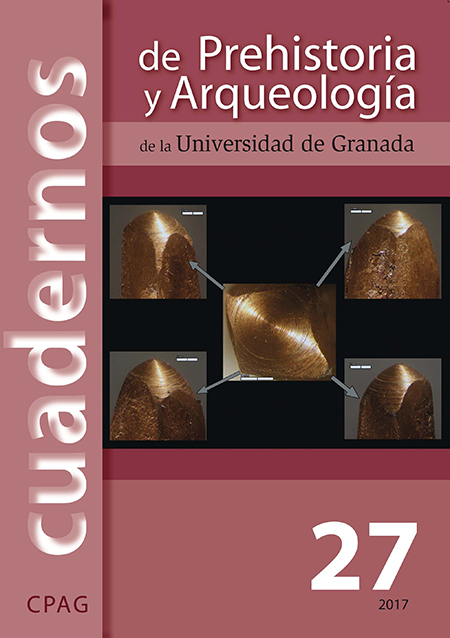MANUAL DRILLING VERSUS MECHANICAL DRILLING IN PREHISTORY. CONTRIBUTIONS FROM TRACEOLOGY
Main Article Content
Abstract
Functional studies are providing a more thorough knowledge ofmental collections. In this paper, we focus on a specific activity, the perforation by rotation. We wanted to prove both the efficacy of the manual rotation compared with that of the bow-drills and pump-drills, with a continued rotation, and the resultant use-wear patterns. We have used these systems with experimental perforators of stone and metal to expand the catalogue of functional traces, already proposed by other authors. Furthermore, the functional analysis allows the detection of the system used in the drilling tasks. This refers to simple tools in manual or complex drilling, such as bow-drill and pump-drill in mechanical systems, which are made from organic elements and are not preserved in the archaeological record.



